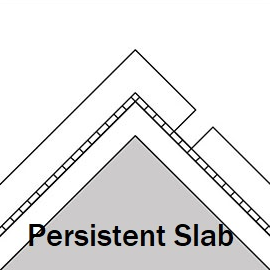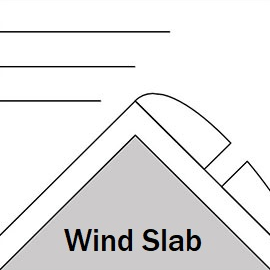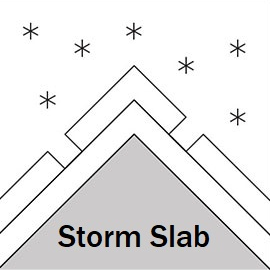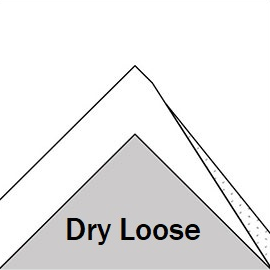Gudauri
Natural avalanches are possible, human-triggered avalanches are likely. Small avalanches in many areas, or large avalanches in specific areas, or very large avalanches in isolated areas.
Another moderate snowfall is hitting Gudauri this night is likely to bring some 20 cms of fresh snow. Current weak and shallow snowpack (especially on shaded slopes in the higher elevations) won't provide a stable support for this snow and some stronger westerly winds in the higher elevations are likely to create wind slabs on leeward slopes higher up.
Forecast issued at: 5 January 2025 00:00
Forecast valid until: 8 January 2025 00:00
Forecaster: Petr Zherdev
High Alpine
> 2600m
3 Considerable
Dangerous avalanche conditions. Careful snowpack evaluation, cautious route-finding and conservative decision-making essential.
Alpine
2000m - 2600m
2 Moderate
Heightened avalanche conditions on specific terrain features. Evaluate snow and terrain carefully; identify features of concern.
Sub Alpine
< 2000m
1 Low
Generally safe avalanche conditions. Watch for unstable snow on isolated terrain features.
Avalanche Problems
Persistent Slab

Prolonged dry periods this season lead to formation of multiple layers of faceted snow at the bottom of the snowpack as well as in the middle of it. Snowpack was reported to consist entirely of faceted snow on some slopes. That created a particularly weak support for the fresh snow that is forecasted to fall during the night on 05th of january and might lead to bigger step-down full-profile avalanches in the high alpine areas where the wind slabs might form during the wind that will follow the snowfall.
| Sensitivity | The specific avalanche problem type is difficult to trigger with a human rider. |
| Distribution | Specific areas, with common characteristics. Evidence for instabilities exists, but it is not obvious and finding it requires careful observations. |
| Time of Day | All day |
| Trend | No change |
| Confidence | Moderate |
Wind Slab

Upcoming snowfall will bring 20-30 cms of fresh snow in the alpine and the high alpine. That will be immediately followed by some moderate westerly winds that will move this fresh snow to the leeward slopes. Such conditions provide conditions for the wind slabs to form.
| Sensitivity | The specific avalanche problem type is reactive to human rider triggers. Easy to trigger with ski cut. |
| Distribution | Specific areas, with common characteristics. Evidence for instabilities exists, but it is not obvious and finding it requires careful observations. |
| Time of Day | All day |
| Trend | Deteriorating |
| Confidence | Moderate |
Storm Slab

As it is likely that the current snowfall will bring ~30 cms of fresh snow in the high alpine, storm slabs might form in this area (including the wind-shielded areas on leeward aspects)
| Sensitivity | The specific avalanche problem type is reactive to human rider triggers. Easy to trigger with ski cut. |
| Distribution | A few, isolated locations; evidence for instabilities is rare and hard to find. |
| Time of Day | All day |
| Trend | Deteriorating |
| Confidence | Moderate |
Loose Dry

Dry loose avalanches are likely to be triggered by riders on steeper slopes on higher elevations and on the shaded aspects in the sub-alpine, where there there was still enough snow cover up until now
| Sensitivity | The specific avalanche problem type is reactive to human rider triggers. Easy to trigger with ski cut. |
| Distribution | Specific areas, with common characteristics. Evidence for instabilities exists, but it is not obvious and finding it requires careful observations. |
| Time of Day | Afternoon |
| Trend | Improving |
| Confidence | Moderate |
Recent Avalanches and Snowpack
date: january 4, size: 1.5, aspect: [NW], elevation: Alpine, triggered by: Rider Unintentional, type: Slab, Description: A small slab was triggered by a rider on the NW face in the Khada valley
date: january 3, size 2, aspect [NE], eleation: High Alpine, triggered by: Natural, type: Wind slab, Description: Natural avalanche observed on NE slope of Bidara N peak overlooking the Kobi pass
date: december 31, size 2, aspect [SW], elevation: High Alpine, triggered by: Natural, Description: Natural avalanche was observed in the SW couloir below Sadzele peak
date: december 31, size 2, aspect [NE, E], elevation: High alpine, triggered by: Natural, Description: Multiple natural avalanches were observed in the couloirs on the E faces of W ridge along the Kobi resort area
date: december 31, size 2, aspect [NW, W], elevation: High alpine, triggered by: Natural, Description: Multiple natural avalanches were observed in the couloirs on the W faces of E ridge along the Kobi resort area
date: december 28, size: 1.5-2, aspect: [N,NE], elevation: Alpine, triggered by: Rider Unintentional, type: Slab, Description: Multiple smaller avalanches were triggered by a group of riders in the lower Kobi area
Snowpack: First and the heaviest snowfall of the season occured on 25-27th of November with some 60-80 cms of fresh snow that has settled down to 40-45 cms of snow at 2000 m on S aspects. This snowfall was followed by a long cold and dry period with clear skies and moderate to strong westerly winds. Two smaller snowfalls later occured on the 18th and 28th of december and brought around 20cms each at 2000 m. There was a warmer period with air temps above 0 celcius throughout the day in between of these. Now the snowpack is 40-60-cms in total in the alpine and around 1 m in the high alpine. All this contributed to the widespread thick layers of faceted snow that are reported on shaded as well as solar aspects on higher elevations. Some whoompfing was reported on the N slopes in the Khada valley at 2300 m.
Weather
Current snowfall will continue up until early daylight hours of 06 of January with air temps around -10C and will bring around 20 cms of fresh snow at 2000 m. (30cms likely on the higher elevations) No significant wind is forecasted for lower elevations yet some stronger, moderate westerly winds with wind speeds up to 30 km/h are forecasted for the high alpine. Air temps on 06th of January will be around -8C during the day and later will drop to as low as -12 during the night at 2000 m. On 7th of January temps will gradually rise up to -3C during the day.
Disclaimer
Our avalanche forecasters are internationally qualified and experienced professionals, and data is provided by skilled observers. We encourage you to make your own observations and decisions, without relying solely on our forecast, since any forecast is a generalised 'best guess', and in certain cases it might be inaccurate. We can not be held liable for any actions you take in the backcountry that may result in injury, loss or death.